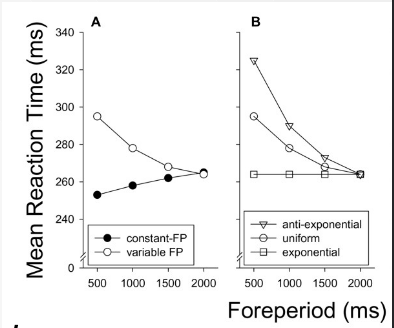Cogntition Hazard Rates
- {Proven wrong} : Cognitive fMTP
- Mathematical construct about probability
- Continuously tracking the odds the event appeads rn given it has not happened yet
- Idea : Use this “hazard rate” to decide when to prepare
- RT is proportional to hazard
- Optimally prepared if certain
Distributions Used (PDF)
- Constant, exponential, flipped exponential
- Hazard rate is this pdf by 1-F
- h(t)=1−F(t)f(t)
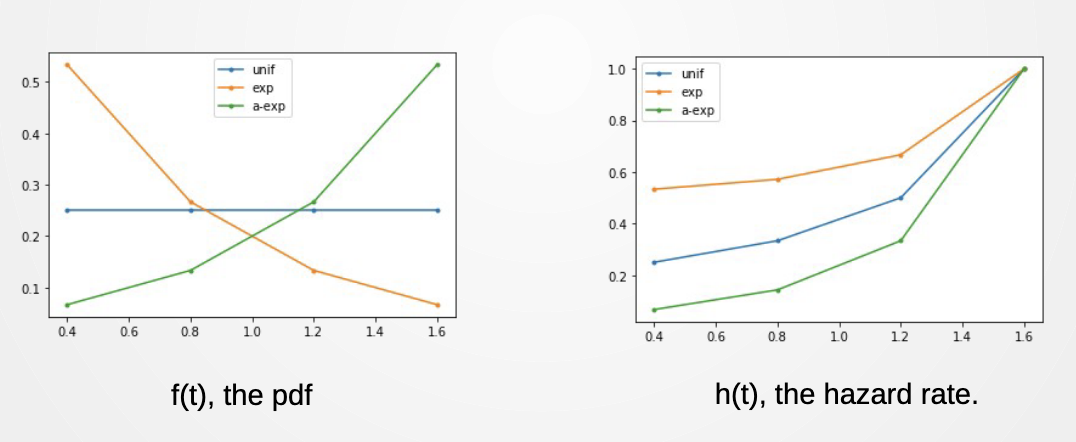
Hazard Rates
- How does that translate to RT?
- Proposed
- RT=c−h(t) : linear effect
- RT=c+h(t)1 : inverse relation
- dashed : hazard1
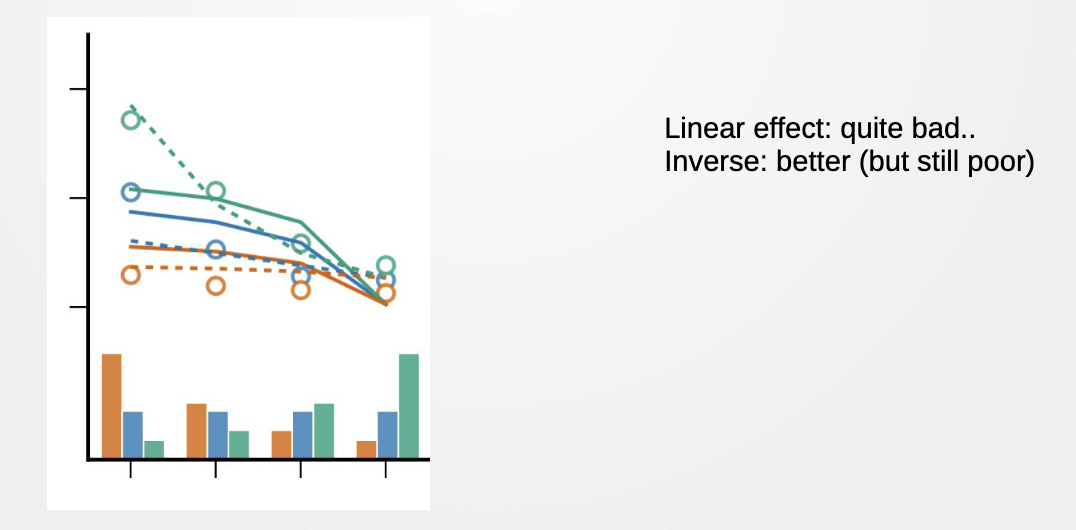
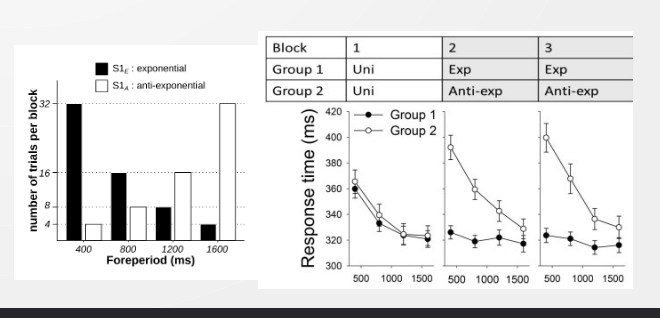
Vs ACT-R
- Prepare for ‘the right moment’
- ‘degree of preparation’ given by moment-to-moment hz
- ‘the right moment’ is estimated based on time (pulses) and memory (DM)
- No ‘time’, no explicit memory?
- If we are prepared→ benefit, else cost
- Scaled benefits (useful for assignment)
- Does not specify why/how; i.e., what preparation is
- No active process during the interval
- Once we are prepared, it doesn’t ‘go away’
- A by-product of the Hazard rate
- No memory model
- Such mathematical models give no mechanism for how the pdf is stored in memory, retrieved, or used…
Problems
- Does not explain preparation
- How do particpants ‘learn’ the distribution?
- Do participants truly track ‘conditional probabilities’ throughout the foreperiod
Extending
- Does not store PDFs in memory, which sucks
- Does not keep track of time as well
- Subjective hazard/ anticipation function
- Temporal uncertainty
- Blur the pdf such that later points are less certain using a Gaussian Filter that gets wider for later points in time
- f′(t)=θt2π1∫−∞∞f(τ)e−2θ2t2(r−t)2dτ
- Climb to 1 after a while
- Hazard is more even though probs are equal in classical. This equates them and makes them less blurred out
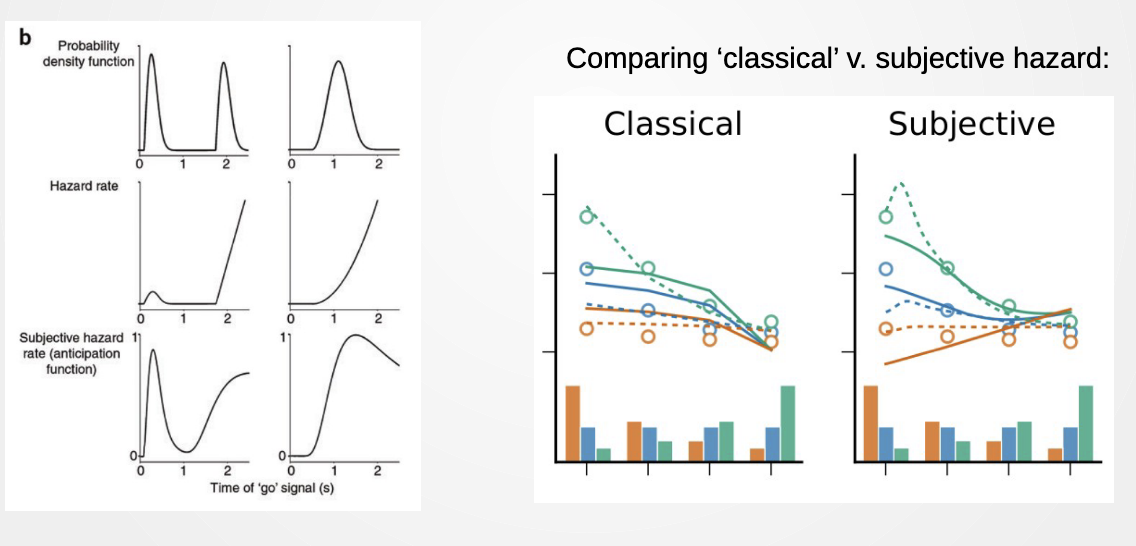
Images




